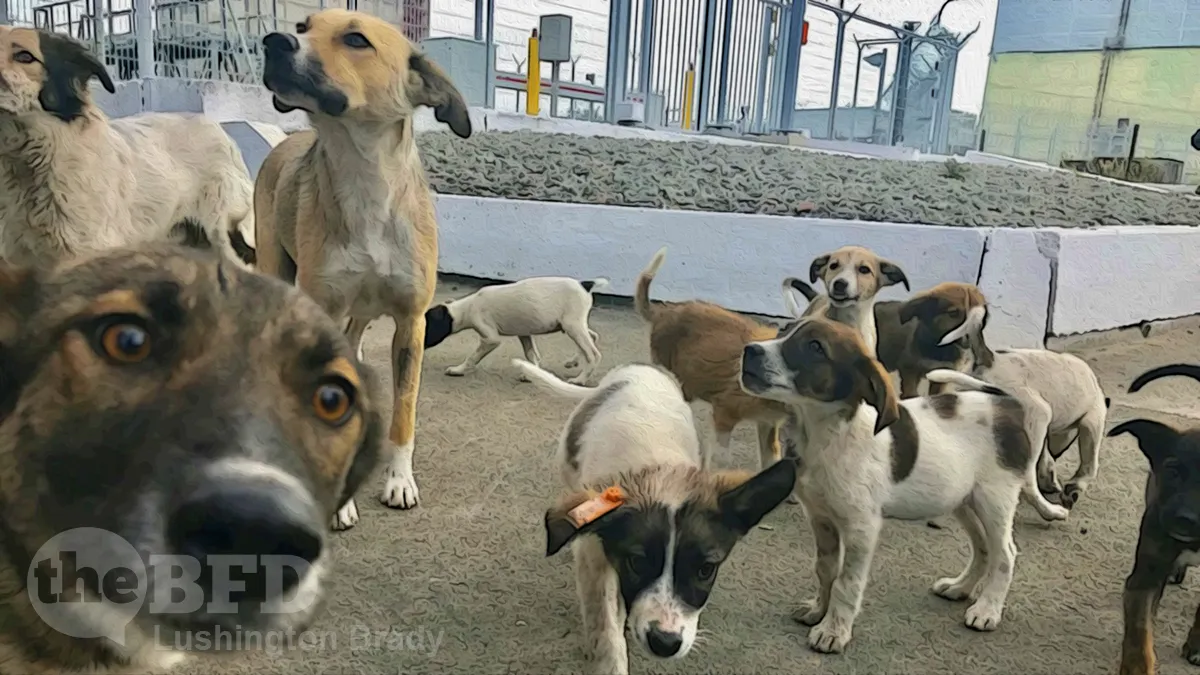Table of Contents
It’s a funny thing, but even the most hardened people who’ve developed a thick skin to the suffering of their fellow humans will turn into incandescent balls of rage at cruelty to animals, especially dogs. Which is why some of the most gut-wrenching scenes in the miniseries Chernobyl are a child’s dog running after the evacuation bus and, later, the soldiers tasked with hunting down and shooting the dogs forcibly abandoned by their owners.
But, for all the efforts of officials convinced both that the dogs would suffer and die without humans to sustain them, and that they would spread radioactive contamination, the dogs of Pripyat survived.
And thrived.
Almost 40 years after the Chernobyl nuclear disaster in Ukraine, hundreds of stray dogs roam the Chernobyl exclusion zone. Many of these pups are the descendants of pets left by families fleeing the disaster, and the lack of human influence in the area has allowed them to flourish.
But, wait – humans are excluded from the area because of the danger of radiation. How has it affected the dogs?
Now, researchers are studying the potential effects of long-term radiation on these dogs – and just discovered that those living within the 18-mile nuclear exclusion zone are genetically distinct from other dogs.
By “genetically distinct”, do they mean that giant, ravening mutant monster hounds are roaming the wasteland? Not quite.
The study, published in the journal Science Advances, examined 302 dogs living varying distances from the Chernobyl power plant, comparing the genes of the dogs residing within the plant to those between nine and 28 miles away.
From 2017 to 2019, researchers collected blood samples from these populations, as well as from free-breeding dogs in other parts of Ukraine and other countries, and tested them for genetic irregularities. According to the study, the researchers found significantly lower levels of genetic diversity among dogs in Pripyat, a nearby city that was abandoned after the disaster.
This population was distinct even from those living in cities mere miles away.
Which would seem to say more about the effect on a small, isolated breeding population than it probably does about radiation.
“I was completely surprised by the near total differentiation between the two populations, the fact that they’ve existed really in relative isolation for quite some time,” Timothy Mousseau, a biologist at the University of South Carolina and an author of the study, told the New York Times. “This is a unique opportunity… a unique population of animals.”
But the idea of radioactive mutants has been too deeply embedded by decades of post-apocalyptic mythology to quite die away.
Although the study notes that physical barriers between cities in the area could have contributed to the variations in genetic diversity, researchers hypothesize that the long-term exposure to radiation could explain why the dogs in the Chernobyl exclusion zone are genetically distinct.
Scientists hope that future studies will show more definitive effects of radiation on dog populations in and around Chernobyl, such as how their generic differences may impact their health, behavior and appearance over time. Further research may also help scientists learn about genetic mutations that help animals survive radiation.
Hopefully, future testing of Chernobyl dogs will also reveal the potential effects of radiation on people. According to geneticist Elaine Ostrander, the dogs’ DNA samples are “incredibly valuable” because dogs and humans share similar spaces and diets.
All That’s Interesting
We’ve been so thoroughly inculcated with the fear of radiation that it’s easy to forget that we lived bathed in a sea of background radiation. Even bananas and granite benchtops are radioactive. Of course, though, there’s radiation and there’s radiation: exposure to large amounts of ionising radiation is a certain death sentence, aside from its massive and almost universally deleterious effect on the chromosomes the exposed would pass on to their descendants.
But it also seems likely that, having evolved in a world of more or less background radiation, humans, like the dogs of Pripyat, might be more robust to living within at least some level of elevated radiation than we’ve been conditioned to believe.









